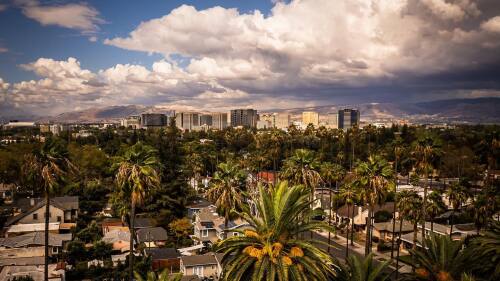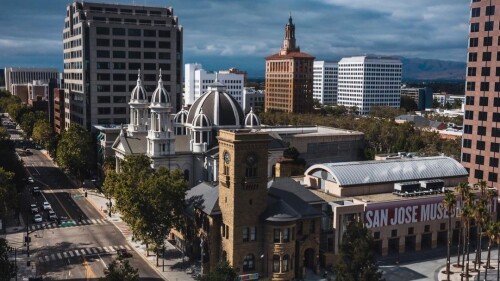On Feb. 19, 1942, President Franklin D. Roosevelt signed Executive Order 9066, which authorized the forced removal + incarceration of 120,000 Japanese Americans across the West Coast. Among these numbers were approximately 6,000 San Jose community members, many of whom were processed at the San Jose State College men’s gymnasium, now the Yoshihiro Uchida Hall at SJSU.
San Jose’s Day of Remembrance
Tomorrow marks the 80th anniversary of the signing of Order 9066, and San Jose’s Nihonmachi Outreach Committee (NOC) will be hosting their 42nd Annual Day of Remembrance to honor the experiences of those who were incarcerated. This year’s theme is Overcoming Hate and Fear, and programming will address the enduring struggle for racial justice.
The virtual event will take place Sat., Feb. 19, from 3-4:30 p.m. The ceremony will include testimonial remembrances from Eiko Tamaichi and other incarcerees + remarks from local activists and organizers representing Stop AAPI Hate and San Jose Nikkei Resisters. There will also be a special dance performance by Kambara+ to precede the ceremony at 2:50 p.m.
In a recent interview with NOC, Tom Oshidari — who was born in a concentration camp in Rohwer, Arkansas — explained how the pain of incarceration silenced many Japanese people from telling their stories, but that it is important to keep the memories of this event alive and elevate the voices of the incarcerees who lived through this historical tragedy.
“It should never have happened [...] and that’s why we need to keep remembering so people know that it actually did happen and can’t happen again,” Tom said.
Before Order 9066
Long before the passage of Order 9066, San Jose boasted a vibrant community of Asian Americans, including Japanese Americans — many of whom came to the the Santa Clara Valley for agricultural opportunities + settled in San Jose’s Chinatown (called “Heinlenville” by locals after John Heinlen, the man who built it).
In the early 1900s, Japanese Americans began developing their own unique community — Japantown, which was also called Nihonmachi. By the 1930s, Japantown had its own gas stations, stores, restaurants, doctor office, and Buddhist temple.
After local anti-Asian sentiment led to the destruction of Chinatown, Japantown was left as the main Asian neighborhood in San Jose. Anti-Asian discrimination would only increase after the Pearl Harbor attacks and the US’s entry into WWII.
After Order 9066
After the passage of Order 9066, Civilian Exclusion Order No. 96 was issued to “All Persons of Japanese Ancestry” living in Santa Clara County. Japanese American adults were told to report to the San Jose State College men’s gymnasium for “evacuation” + to bring only what they could carry.
Between May 24-20, approximately 6,000 people were processed at the local gym, not knowing that they would be incarcerated for the next three years. Upon leaving San Jose, these community members were sent to concentration camps in Tule Lake, CA, Poston, AZ, and Heart Mountain, WY.
The legacy of Order 9066
By 1947, most of San Jose’s incarcerees had returned home. Many had lost land + property and had to start over. Japantown once again became a haven, and by the 1950’s the Japanese American population in San Jose had doubled.
In the 1980’s, the US government formally apologized for Order 9066 and the subsequent incarcerations, admitting that the decision was based on “racial prejudice” and “wartime hysteria.” At the local level, San Jose + Santa Clara County made similar apologies.
This decade was also the first where NOC began recognizing Feb. 19 as a Day of Remembrance, in the hopes that this history would never be forgotten.
To learn more about San Jose’s history of Japanese American incarceration, you can also visit the San Jose Japanese American Museum, or explore Japantown with Hidden Histories’ augmented reality experience.












